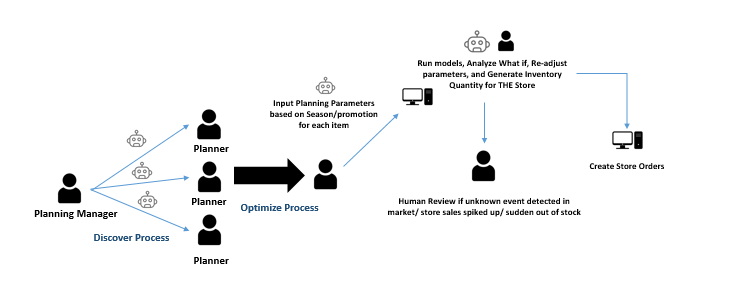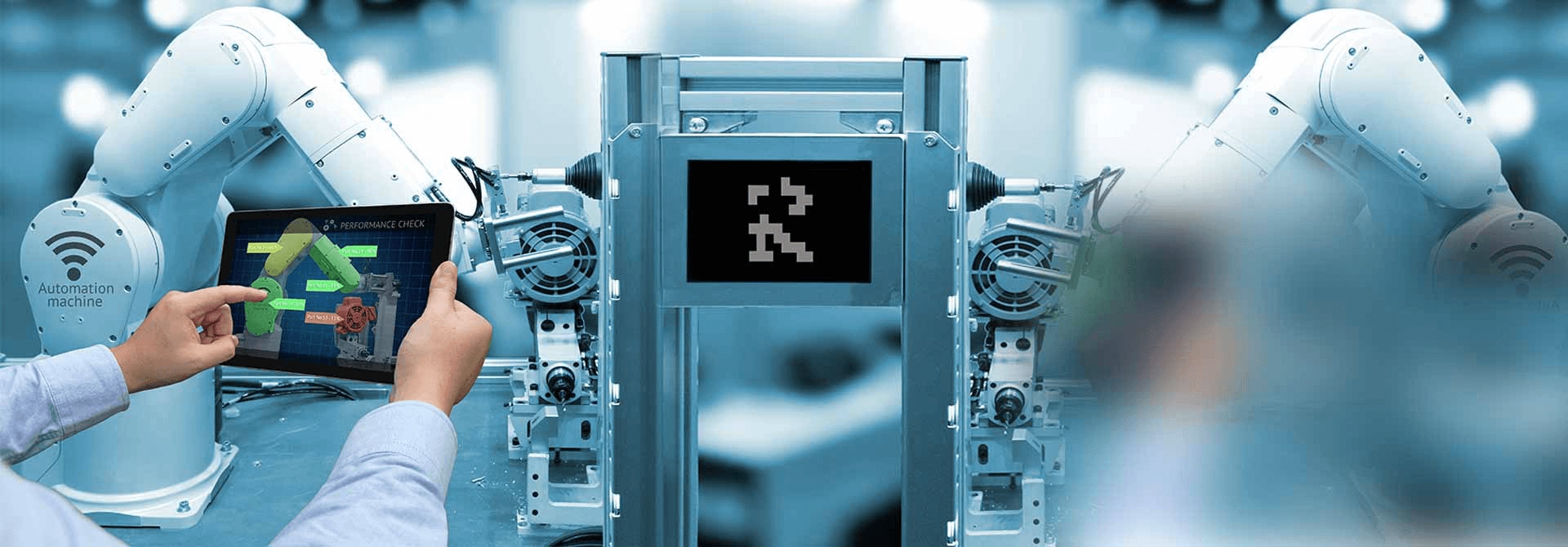Home > AssistEdge > Blogs > Automation Singularity: How Human and Digital workforce convergence will transform the future
Automation Singularity: How Human and Digital workforce convergence will transform the future
Automation and AI is no more a buzzword; it’s a reality. From our day-to-day tasks to workplace operations, intelligent machines are altering our way of living. This is just the beginning and economists see this disruption on a large scale and complexity that they have deemed it as ‘The Fourth Industrial Revolution’. (Klaus Shwab, WEF)^1
The world is moving towards a new vision, especially when it comes to re-imagining the workforce for enabling efficient business operations. Gartner predicts that 70 percent of organizations will leverage AI and Automation technologies to enable and assist employees in their task productivity^2. The disruption that RPA brought in back office operations is now cutting those boundaries. Thanks to Cognitive technologies, there is an intelligence explosion in functional front-end operations resulting in digital workers with human-centric capabilities driving critical business activities.
However, this progression of Automation and AI permeating across multiple boundaries in the workplace has its limitations. Intelligent Digital workers, if we may call them so, lack core human traits like Intuition. How many times have you applied a break on the car and avoided an accident just because of an intuition or how many times have you made a business decision based on intuition — probably more often than once and mostly it is combination of Intuition and Intelligence. This combination makes us the most advanced species and lack of this is where Digital workers are more vulnerable to mistakes, when it comes to making decisions.
The advancement in technology is surely removing these gaps and concepts like Singularity are gaining traction – Singularity hypothesis^3 suggests that technology advancement will cause an effect that will not only make machines exceed human intellect but will also see human intelligence grow in a non-biological way. While the singularity hypothesis may be a dystopian world, we are already in an era where the convergence of human and machine is paving the way towards Automation Singularity. In our view, Automation Singularity is not where AI-enabled digital workers will replace humans, but it is where digital workers and humans will collaborate to enhance each other’s capabilities, while slowly converging together to create an intelligent future workforce..
To emphasize the journey towards Automation Singularity and how it will work, let us take a flavor of it with an offbeat example:
For a retail company, ensuring that the right inventory is available at the right location at the right time is most critical. To ensure that, they have planners analyzing the inventory day in, day out to see to it that no high selling product goes out of stock and no customer walks out of the store unsatisfied.
In order to plan and send optimal inventory to the store, planners are using multiple data sources, planning tools and mathematical calculations. Furthermore, not all planners are optimized in their way of working; they might be using different tools and logics to fulfill the demand. It’s not a simple job, it is time-consuming and it needs a deep understanding of business, number crunching and decision making
Every item and store has parameters/attributes associated with it like what period of historical sales should be considered or if there is any minimum or maximum item required in a specific store or set of stores. Planners usually work around these parameters along with multiple reports (like out of stock etc.) and additional data sets (like sizing) before applying a model to predict what inventory needs to go to what store. When we think of the current automation landscape, this is probably not the best candidate but let us bring the journey towards Automation Singularity and re-imagine this with a team structure of Human and Digital workers.

In the journey towards Automation Singularity:
The above example depicts how human and digital convergence can be a win-win for the organization’s core operations. As RPA is becoming part and parcel of organizational processes, the shift towards convergence is the next logical step for organizations. The removal of boundaries and leveraging digital workers will not only enable cost-saving but will also generate revenue and increase customer experience.
References:


Deepinder Dhuria
Product Manager, EdgeVerve
More blogs from Deepinder >